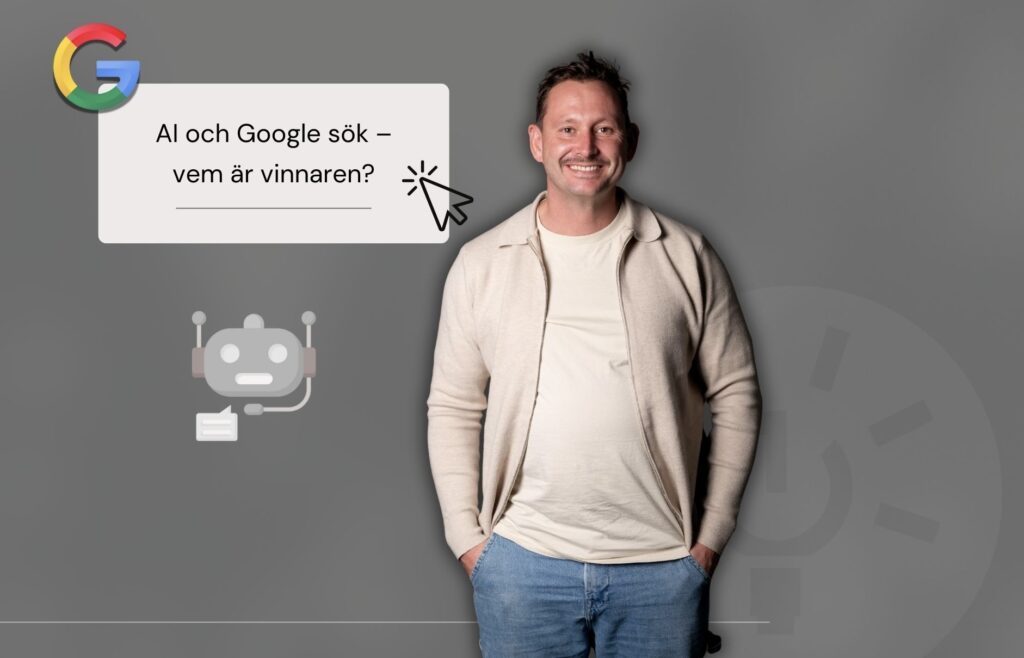AI has quickly gone from being a technical talking point to actually changing how we search, find and make purchasing decisions. The question is no longer whether AI affects search, but how quickly and in what way.
Fact: AI is growing – both globally and in Sweden
On the global stage, AI search is growing rapidly, but Google remains the undisputed leader. In 2024, Google handled over 5 trillion searches – 373 times more than ChatGPT – and remains at around 93% global market share. At the same time, we are seeing a shift: in early 2025, Google’s share fell below 90% for the first time since 2015.
In Sweden, the trend is clear, even if volumes are still small. According to recent data from Pontus Vippelius, traffic from AI tools such as ChatGPT, Perplexity, Gemini and Co-pilot to Swedish e-retailers increased by 6763% in June 2025 compared to the same month the previous year. Transactions? Up 10,167%.
Yes – it still accounts for around 0.10% of total traffic, but the conversion rate from AI traffic is approaching double that of traditional organic traffic. This means that even small volumes can have a disproportionately large impact on sales.
AI takes its place in the search journey – even via Google
It is not only external AI tools that are driving change. Google is rolling out its AI Overviews to an increasing extent in Sweden. This means that more purchasing journeys are initiated, influenced or even completed in Google’s search results – without the user clicking further. This is not always visible in traditional analysis tools, which makes it easy to underestimate the impact.
Globally, user behaviour is changing from ‘searching’ to ‘asking’ – and expecting ready answers, not just links. AI meets that need directly, and that means that Google, rather than competing with AI, is integrating it into the core of its service.
And it doesn’t stop there. This summer, Google opened up to indexing conversations from ChatGPT – if the user actively makes them public. This creates a whole new type of content for SEO: AI-generated guides and answers that can show up in search results without you even needing your own website.
The potential is enormous, but there is also a downside. This feature opens the door to so-called parasite SEO, where less reputable players mass-publish AI content on other people’s domains to ride on their authority. Google quickly rolled back the feature, but it is a clear taste of the future – where the line between AI and traditional web information is blurred.
So what does this mean going forward?
We are facing a dual movement:
External AI tools are growing rapidly and becoming a new traffic and conversion channel.
Google is changing the search experience itself and integrating AI into its ecosystem.
For e-retailers, marketers and content creators, this means that we need to understand both of these flows – and optimise for them. It’s about experimenting, testing and measuring, but also about sticking to the basics: clarity, credibility and customer value.
Source and colleagues contributing to the facts: Pontus Vippelius, Magnus Bråth



